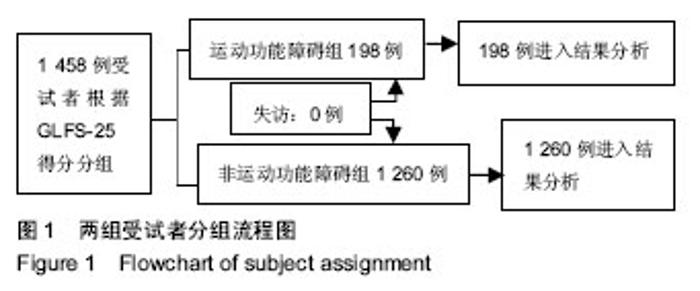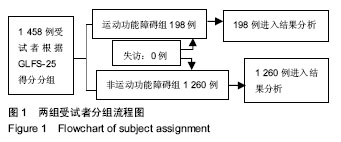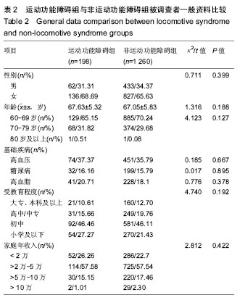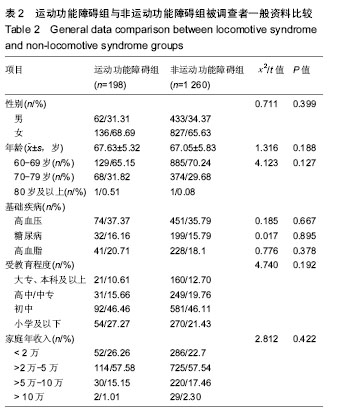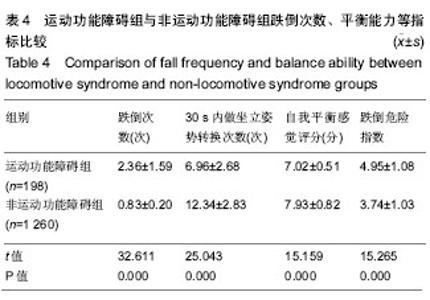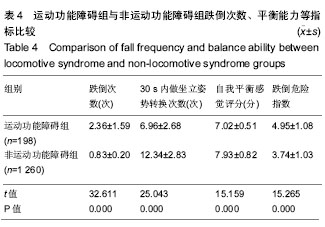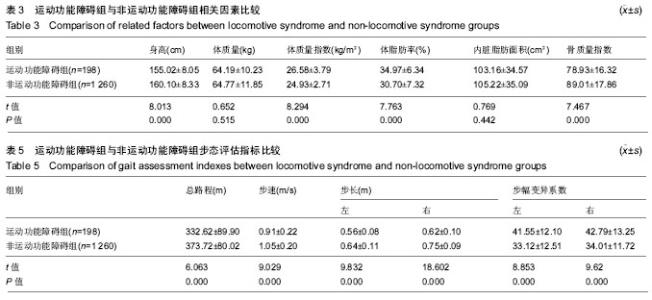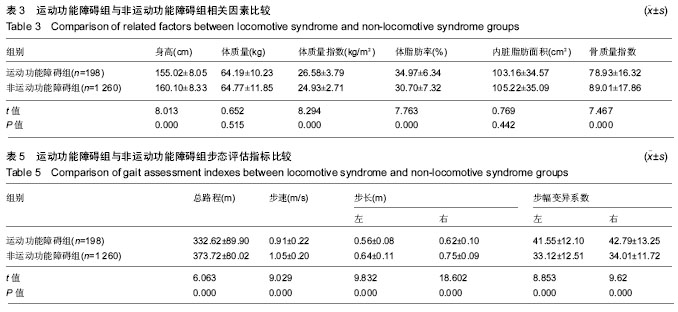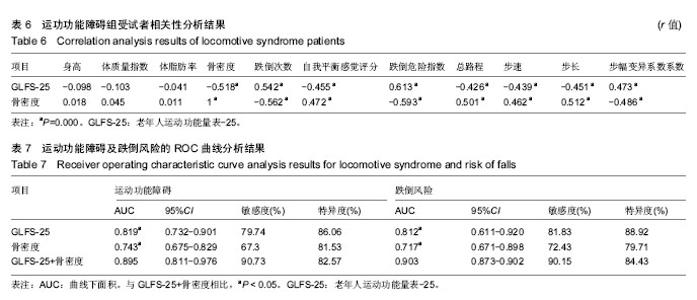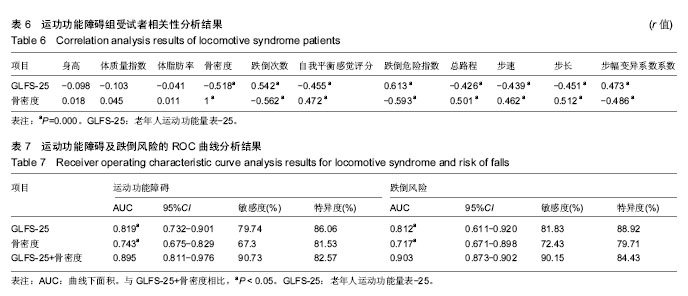| [1] Yoshimura N, Muraki S, Nakamura K, et al. Epidemiology of the locomotive syndrome: The research on osteoarthritis/ osteoporosis against disability study 2005-2015. Mod Rheumatol.2017;27(1):1-7. [2] Tano T, Ono K, Hiratsuka Y, et al. Retinal vessel diameters in a Japanese population: the Locomotive Syndrome and Health Outcome in Aizu Cohort Study.Acta Ophthalmol. 2016;94(6):e432-41. [3] 赵鸣,王浩,何勇,等.养老机构老年人跌倒发生流行特征与危险因素分析[J].中华急诊医学杂志,2016,25(5):654-658.[4] Tavares DR, Santos FC.Locomotive syndrome in the elderly: translation, cultural adaptation, and Brazilian validation of the tool 25-Question Geriatric Locomotive Function Scale. Rev Bras ReumatolEngl Ed.2017;57(1): 56-63.[5] 梁雷超,吕娇娇,黄灵燕,等.认知-姿势控制双任务在老年人跌倒研究中的应用进展[J].中国康复理论与实践, 2016, 22(11): 1289-1293.[6] 孙威,王疆娜,杨春荣,等.太极拳和快走练习对老年女性骨密度和骨代谢影响的跟踪研究[J].中国骨质疏松杂志, 2017, 23(8): 1034-1040.[7] 张宁,李慧娟,张瑞丽.运动障碍综合征及其诊断评估预防研究现状[J].中国运动医学杂志,2016,35(2):189-191.[8] 陈奕,纽美娥,钱红英,等.五次坐立实验在慢性阻塞性肺疾病患者下肢功能评估中的初步应用[J].中国实用护理杂志, 2016, 32(8):566-570.[9] 林源,钮美娥,王丽.脑卒中患者平衡功能评定方法的应用进展[J].中国康复理论与实践,2016, 22(6):667-671.[10] 刘郑,倪朝民,刘孟,等.脑卒中偏袒患者步态与站立平衡功能间的相关性分析[J].中华物理医学与康复杂志,2016,38(4): 250-253.[11] 李萍,姜丽萍,陈颖颖,等.失能老年人长期照护家庭负担及影响因素[J].护理研究,2016,30(21):L2584-2587.[12] 张宁.老年人运动量表的汉化及在肌肉骨骼系统性疾病中的应用研究[D].石家庄:河北医科大学,2016:7-10.[13] Iwaya T, Doi T, Seichi A, et al. Relationship between physician-judged functioning level and self-reported disabilities in elderly people with locomotive disorders.Qual Life Res.2016;26(1):35-43. [14] 隋建玲,周绍龙,李玉,等.山东省淄博市城区中老年人群骨密度变化及骨质疏松发生率调查[J].中国骨质疏松杂志, 2016,22 (10): 1273-1276.[15] Hosseini SR, Baghitabar N, Mirzapour A, et al. Hyponatremia, Bone Mineral Density and Falls in the Elderly; results from AHAP study. Rom J Intern Med.2017; 56(1):41-46. [16] Sayed SA, Khaliq A, MahmoodA.Evaluating The Risk Of Osteoporosis Through Bone Mass Density. JAMC.2016; 28(4): 730-733. [17] 闫岩,孙艳格,杜雪平,等.超声骨密度检查对社区绝经后妇女骨质疏松症筛查效果评价[J].中国全科医学, 2016, 19 (14): 1629-1632.中国组织工程研究杂志出版内容重点:组织构建;骨细胞;软骨细胞;细胞培养;成纤维细胞;血管内皮细胞;骨质疏松;组织工程 |
